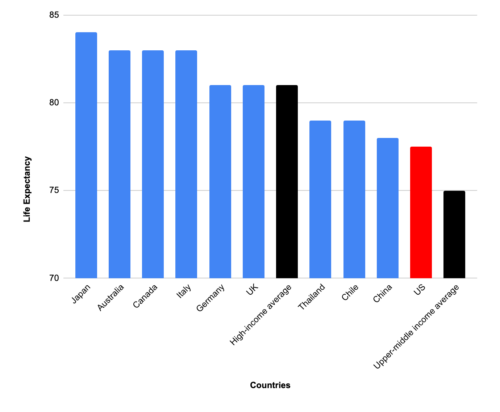Did Democrats Lose for Structural Reasons, or Were They Punished for Mistakes?
By: / 11.09.2010
 In unfinished business from last Tuesday, there are still eight House races unresolved, after 11th district of Virginia Republican candidate Keith Fimian conceded to Rep. Gerry Connolly. While Reps. Ben Chandler of KY and Jerry McInerny of CA hold leads with scattered ballots still out and recounts possible, Republicans appear to lead in the other six races (involving Democratic incumbents Jim Costa of CA, Melissa Bean of IL, Tim Bishop and Dan Maffei of NY, and Bobby Etheridge of NC, and Solomon Ortiz of TX). If all current leads held, Republican gains would come in at 65, but my guess is that one or two of the Democrats now trailing will pull out a win.
In unfinished business from last Tuesday, there are still eight House races unresolved, after 11th district of Virginia Republican candidate Keith Fimian conceded to Rep. Gerry Connolly. While Reps. Ben Chandler of KY and Jerry McInerny of CA hold leads with scattered ballots still out and recounts possible, Republicans appear to lead in the other six races (involving Democratic incumbents Jim Costa of CA, Melissa Bean of IL, Tim Bishop and Dan Maffei of NY, and Bobby Etheridge of NC, and Solomon Ortiz of TX). If all current leads held, Republican gains would come in at 65, but my guess is that one or two of the Democrats now trailing will pull out a win.
The unresolved gubernatorial races are now down to just one, in Minnesota, where Republicans still bitter about the outcome of the 2008 Senate race seem determined to delay certification of Mark Dayton’s election as governor as long as they possibly can.
As the vote counting winds down, of course, the post-election interpretation battles are just now warming up. There are, of course, partisan differences, with Republicans tending to treat the results as a historic and perhaps semi-permanent repudiation of Barack Obama, the Democratic Party, liberalism, socialism, the New Deal, elitism, progressivism, or you-name-it.
Democrats are more divided, with some drawing big (and often varying) lessons from the defeat, and others stressing structural factors that made the results inevitable and/or lessened its predictive value for the future. The former, “big lessons” camp is itself divided between progressives who think Democrats lost because they discouraged the party base and compromised too much with Republicans and Blue Dogs (and/or failed to take the kind of radical steps that could have actually revived the economy), and centrists who think Democrats “overreached” by trying to implement an agenda that the economic emergency made undoable and unpopular.
The “structuralist” interpretation (which I happen to largely share) was succinctly summarized by Ruy Texeira and John Halpin of the Center for American Progress:
Why did the Democrats decisively lose this election? It’s not really a mystery. The 2010 midterms were shaped by three fundamental factors: the poor state of the economy, the abnormally conservative composition of the midterm electorate, and the large number of vulnerable seats in conservative-leaning areas.
Much of the argument over what happened and why will inevitably revolve around the big swing in self-identified independent voters between 2006-08 and 2010. Are these the same voters, or different subsets of voters (i.e., was this a pure “swing” in voting behavior, or at least partly an illusion of changes in self-identification and turnout patterns?)? Is the “swing” attributable to factors other than independent identity (e.g., age), or to a genuine change in ideology, or to a rejection of “Obamaism,” or to a continuing rejection of the status quo across administrations and party regimes, or to simple unhappiness about the economy? The answers to these questions have a large bearing on how each party should act in order to improve its performance in 2012.
One thing that is relatively clear is that the Republican “wave” broke pretty evenly across the electoral landscape, at least in House races; regions where Democrats did relatively well (e.g., the Pacific Coast) are just more favorable to Democrats. Here’s how Nate Silver of FiveThirtyEight explained it:
Rather than a realigning election, then, 2010 served as more of an aligning election: congressional districts behaved less independently from one another, and incumbency status mattered less. Instead, they hewed tightly to national trends and the overall partisanship of each district. Most of the incumbent congressmen whose districts had been outliers before (mainly Democrats like Representative Gene Taylor, whose district gave just 31 percent of its vote to Barack Obama, but also a couple of Republicans like Representative Joseph Cao) were forced into early retirement.
In other words, there was a general, national shift in favor of Republicans that produced relatively predictable results. That’s true whether you believe the shift involved a sea change in the ideological views of the electorate or just typical midterm turnout patterns and a typical reaction to a bad economy. A similar shift towards Democrats in 2012 would produce similar Democratic House gains—with the exception of the advantages Republicans are now poised to achieve through redistricting.
So why do these post-election interpretive arguments matter? Well, to state the most obvious factor, if Republicans accept a structuralist interpretation, they are likely to be very cautious about advancing a radically conservative agenda, since the likely 2012 electorate is going to produce semi-automatic Democratic gains, which may also be augmented by any improvements in the national economy. If, to cite another example, Democrats accept a “big lessons to learn” interpretation, it would dictate a significant change in strategy for the Obama administration and congressional leaders; unfortunately, the progressive and centrist versions of this interpretation point in very different directions.






